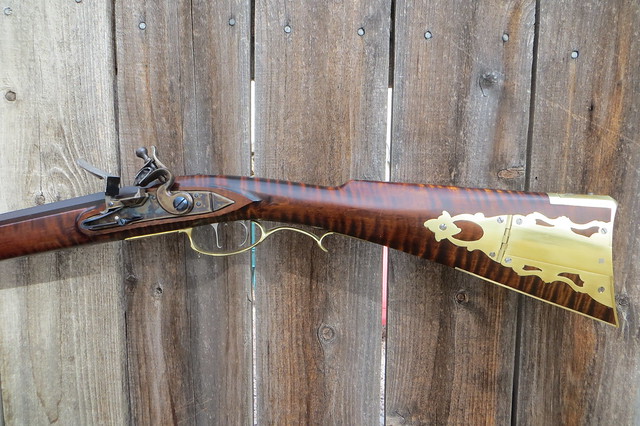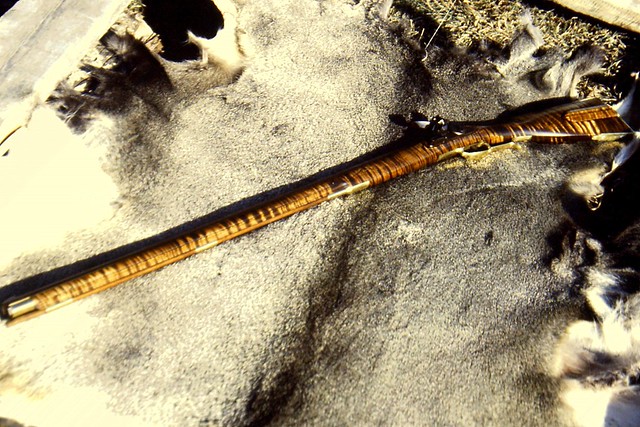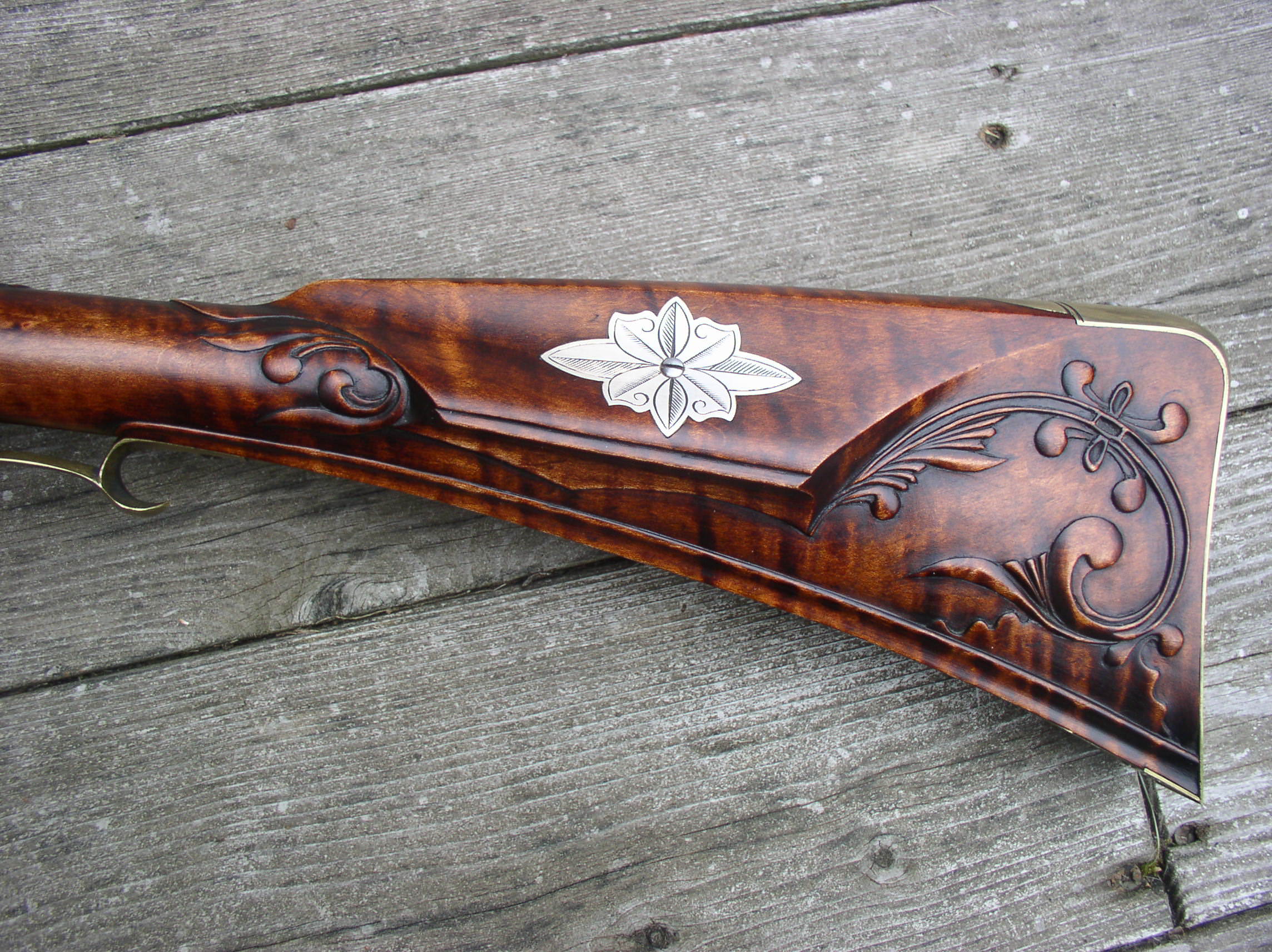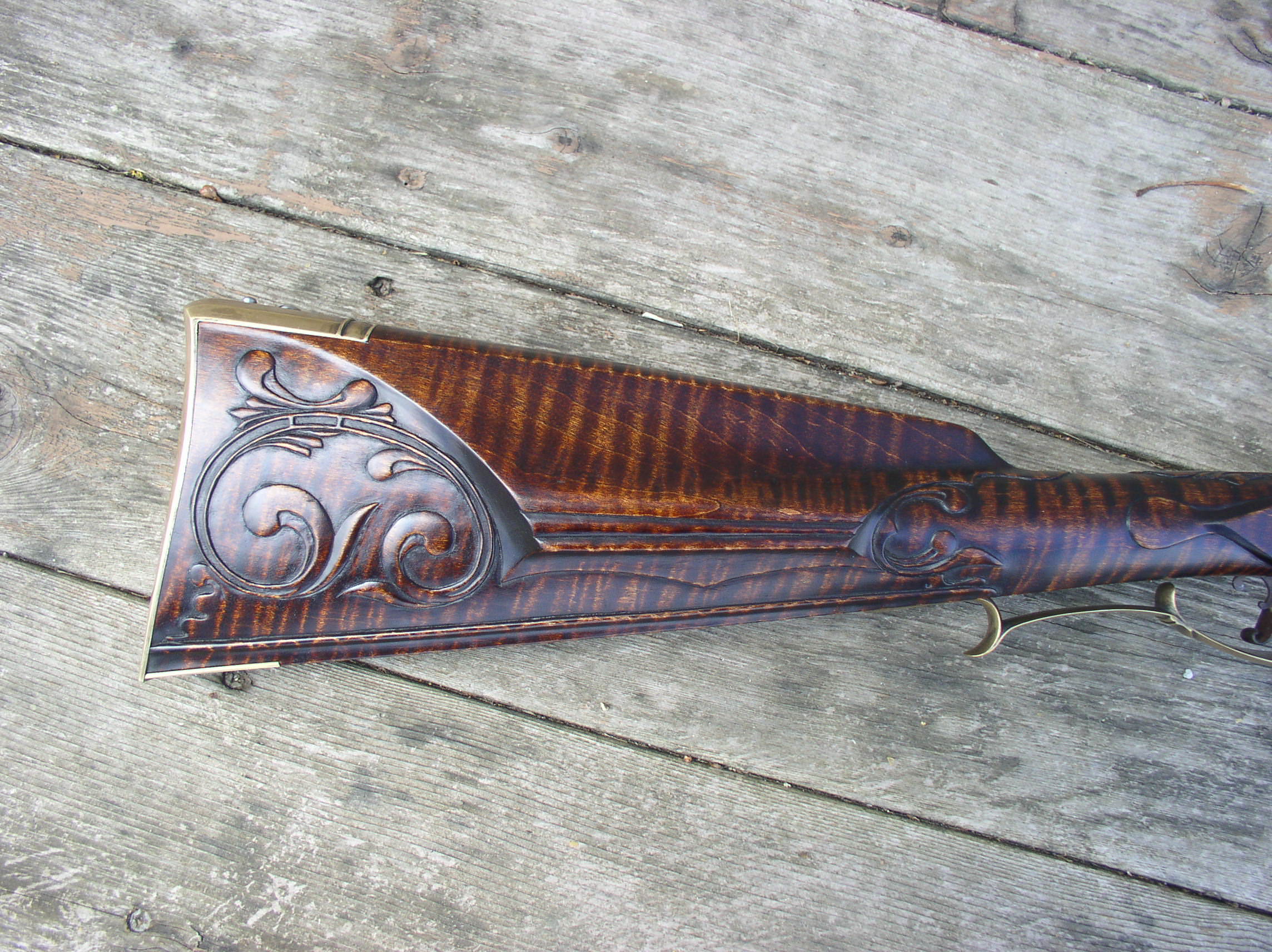What would be the proper order of finishing a stock assuming I am going to use agua-fortis, stain, etc. Obviously the agu-fortis is first, then stain, then?? Should the stock receive several coats of varnish sanded in between the coats? I have read where there are finishes that are oils and are rubbed in. To many years ago I finished a Kentucky pistol, walnut stock, with varnish, sanding, varnish, sanding several times and then use pumice stone and rotten stone powder to hand rub a finish that was rock hard and has lasted a long time. Please tell me the pros and cons. I have a curly/striped maple stock that is close to the finish step.
I have noticed that some stocks have the inlays, toe plates and etc. finished to the stock before the stock is stained. How is the toe plate or inlay protected and cleaned later?
I have noticed that some stocks have the inlays, toe plates and etc. finished to the stock before the stock is stained. How is the toe plate or inlay protected and cleaned later?











